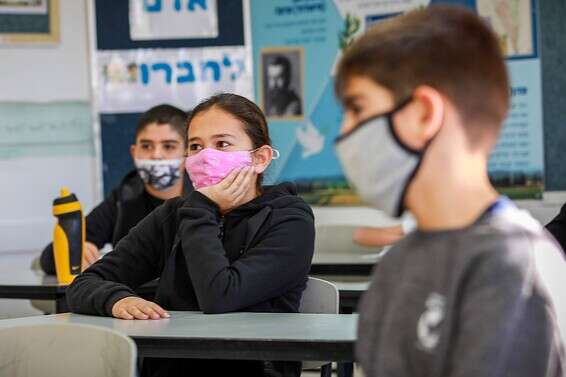
In the other areas and in grades 5-12, learning will continue from a distance. Kindergarten classes will take place six days a week, according to the regular hours system, and after-school classes will run five days a week, in permanent staffs and groups (up to three kindergarten classes, up to 28 students per group). Learning in first and second grades will take place in full classes for five days a week and for five hours daily, and in third and fourth grades the classes will take place in regular groups (up to 20 students per group) for five days a week and for five hours daily.
In total, there are only about 480,000 returning to school today: about 175,000 live in green cities, and about 235,000 students from yellow cities. At the same time, orange cities, with about 77,000 students, were allowed to return to schools.
Archive photo: Yoni Rickner, Moshe Ben Simhon, Paz Bar, Newsenders
One of the most troubling issues is the transition of teaching staff, both within classrooms and between cities. As for the first issue, a teacher in first and second grades will be able to teach while switching between three permanent organic groups, at most. Whereas in grades 3-4, the teacher will be able to teach while switching between four regular organic groups, at most. This means that if a teacher is sick in Corona, he will be sent to isolate dozens of students. The second issue in this context, as mentioned, is teaching staff who live in a red city, but teach in a yellow or green city – and may “bring with them” the morbidity into a school.

One point of light for students living in red cities is permission to hold open-air meetings, in all areas and at all ages: in kindergartens, elementary and post-primary schools (including fifth-twelfth grades) open-air meetings can be held in a group of nine students and a teacher. At most.
Kindergartens will be allowed to adapt for a week and parents will be allowed in (wearing a mask) for ten minutes, just like before the closure. Students from first grade and up will be required to wear masks in class, with instructions to ventilate classrooms and keep as much distance as possible during breaks, during class, in teachers’ rooms – something that is impossible among such young children.

KGB: After Purim
Unclearly, the Ministry of Education continues to allow outside operators to enter the school, where it can meet up to four different groups. Some argue that this is an unnecessary risk as these are adults who are not on the regular school staff.
And here’s the schedule for the rest of the age group: the second beat will take place on February 23 and will include fifth-, sixth-, twelfth-twelfth-grade students in green and yellow cities, as well as borderline orange cities with more than 70 percent vaccinated. However, on February 25, students are scheduled to go on Purim vacation.
Those who are expected to return to school in just about a month, on the estimated date – March 9 – are middle school students (7th-9th) and tenth graders in green and yellow cities, as well as in borderline orange cities with more than 70% vaccinated. “I get excited about the students on a daily basis and now I am especially excited to return to teaching in class,” Shirley Lior, a second-grade educator at Brenner School in Givatayim, tells Israel Today, “I see how much they and I need it and how important it is.”